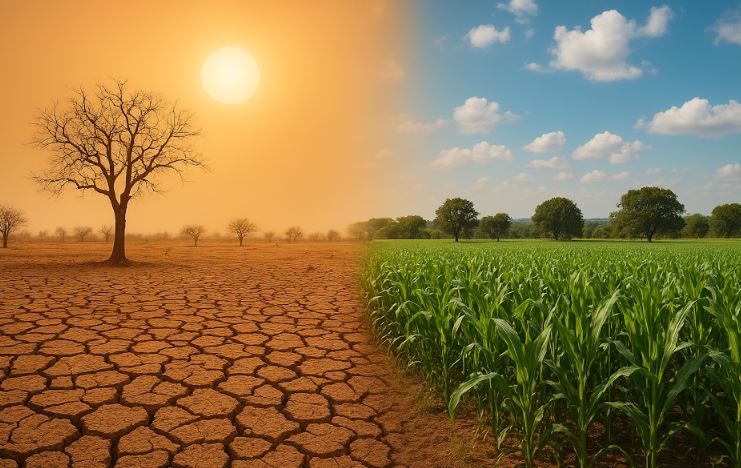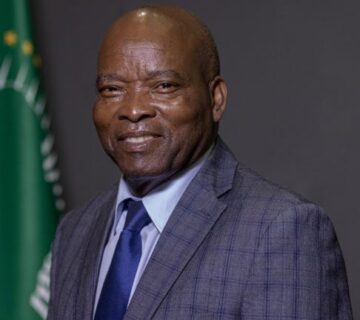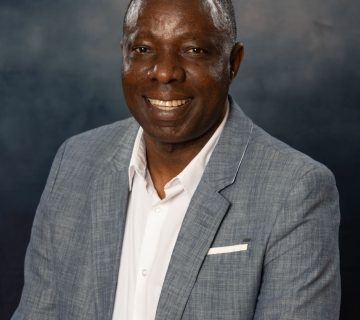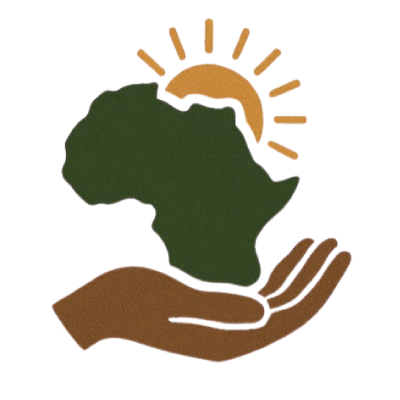By Eleonora Cammarano
Climate change and terrorism might seem like unrelated challenges, but in the Sahel region of West Africa they are deeply intertwined. The Sahel, a semi-arid belt stretching across Mali, Niger, and Burkina Faso, is experiencing unprecedented environmental stress. Rising temperatures, erratic rainfall, and creeping desertification are not just ecological issues; they contribute to social and political instability. In recent years, the Sahel has become the epicenter of some of the world’s deadliest terrorist insurgencies. Understanding how climate change fuels conflict in the Sahel, and examining Burkina Faso as a case study, reveals a complex picture of a threat multiplier effect: climate pressures exacerbate existing fragilities, creating fertile ground for extremist violence.
Climate Change in the Sahel: A Threat Multiplier
The Sahel is one of the world’s most climate-vulnerable regions. Temperatures in the Sahel are rising about 1.5 times faster than the global average, and rainfall patterns have become increasingly unpredictable. Prolonged droughts are interspersed with intense floods, leading to poor harvests and dying livestock. In a region where the majority depend on rain-fed farming and herding, a bad rainy season can mean hunger, loss of income, and displacement. Food insecurity has grown as agriculture yields decline. Water scarcity has become chronic in many areas; women and children often trek longer distances to find water, exposing them to new dangers. Meanwhile, rapid population growth, with the Sahel’s population set to double by 2050, means more people are competing for fewer resources. Climate change by itself does not cause conflict, but it creates conditions in which frustrations and grievances can boil over. When basic needs such as food, water, and land are in short supply, community relations fray and the risk of violence increases.
Case Study: Burkina Faso in the Climate-Conflict Nexus
Burkina Faso exemplifies the acute convergence of climate vulnerability, fragility, and insecurity in the Sahel. According to the ND GAIN Index, the country ranks 147th out of 177 globally, with a vulnerability score of 0.521, one of the highest in the world, and a readiness score of just 0.289, indicating minimal institutional or infrastructural capacity to cope with environmental stress. This climate exposure intersects with deep structural fragility. The Fragile States Index consistently ranks Burkina Faso among the most unstable countries, driven by weak governance, armed conflict, and chronic political volatility. The Global Peace Index reinforces this picture, placing Burkina Faso among the least peaceful nations, with violence driven largely by terrorism. These overlapping risks form a feedback loop: climate stress fuels fragility, fragility accelerates violence, and violence undermines adaptation, making recovery increasingly difficult.
Starting around 2015, Burkina Faso also experienced the spillover of jihadist insurgencies from neighboring Mali. Initially localized, the insurgency in Burkina escalated dramatically; since the Coup d’etat in 2022, the country was experiencing an explosion of terrorist attacks and intercommunal violence with an estimation of 5,000 successful terrorist attacks. While climate stress is significant, it is only one part of the equation. Burkina’s security challenges also stem from long-standing issues of fragility and weak governance. Within the vast territory, chronic underdevelopment, poverty, and political marginalization of peripheral communities have left a legacy of discontent that predates the current climate crisis. This governance gap means local disputes or hardships often go unaddressed by authorities, breeding resentment. In this landscape, militia groups set up parallel systems of governance, often through violence and illicit economies.
Villages in Burkina’s Sahel Region (north) and Centre-Nord Region, which were once largely farming communities, found themselves in a fight for survival due to climate shifts. As harvests declined, farmers began expanding their fields into marginal lands and former grazing corridors to maintain food production. This encroachment, combined with scarcer pastures, triggered a sharp rise in tensions with nomadic Muslim Fulani (Peuhl) herders in the area. Deadly clashes erupted between farmers from majority groups and Fulani pastoralists accused of damaging crops. The government struggled to mediate or provide relief. Instead, local self-defense militias (such as the Koglweogo and Dozo groups) formed to protect villages. These militias often viewed all Fulani herders with suspicion, stereotyping them as accomplices of bandits or jihadists. In retaliation, they committed atrocities against Fulani civilians. This spiral of communal violence was aggravated by the struggle over resources that climate change had intensified. Entire Fulani communities felt victimized by the climate on one hand and by their farming neighbors and government forces on the other.
Zooming in this dynamic, Jihadist groups cleverly tapped into these local conflicts. Ansaroul Islam, a homegrown Burkinabè extremist group, and later JNIM (linked to Al-Qaeda) presented themselves in the north as defenders of the Fulani pastoralists. They condemned the government for arming militias and failing to protect Fulani livelihoods. By offering to help avenge attacks or promising grazing rights and water access, they gained support among segments of the Fulani population who were pushed to desperation. In eastern Burkina Faso, where drought and conservation policies had restricted farming and hunting in some nature reserves, militants similarly exploited the anger of communities who felt authorities cared more about wildlife than people. In both cases, climate-related livelihood crises gave the jihadists a powerful recruiting narrative: that the existing system was broken and only a new order (their Islamist governance) could bring justice and survival.
The security crisis further hurt Burkina Faso’s economy, already vulnerable to climate shocks. Markets closed due to violence, and trade routes were cut. During food shortages, they insurgents distribute stolen food or allow civilians access to land and resources under their control. By rationing water access or charging fees, they not only secure income but also cement social control. As climate change had already eroded traditional farming and herding income, the conflict delivered another blow, leaving tens of thousands of young men with no jobs and no prospects. Extremist recruiters took advantage of this void. In the absence of the state, they promised consistent pay (or loot) to recruits, along with a sense of solidarity in a cause. Many recruits likely did not start with extremist ideology; rather, a mix of fear, survival needs, and anger at authorities drew them in. By 2023, large swaths of Burkina’s rural north and east were effectively under insurgent influence or control, illustrating how quickly the synergy of climate stress and insurgency can unravel a country.
Consequences and Human Security Impacts
The convergence of climate change and terrorism in the Sahel has dire consequences for human security. Firstly, it has produced a massive humanitarian crisis. As seen in Burkina Faso and neighboring countries, millions have been uprooted from their homes. These internally displaced people and refugees often lose their livelihoods and become dependent on aid. Camps and host communities struggle to accommodate the influx, leading to overcrowding, sanitation issues, and risks of disease.
Secondly, food security in the region is under severe threat. Farmland abandonment due to conflict, combined with climate-induced crop failures, means acute malnutrition is on the rise. The Sahel has experienced recurring food crises, and the presence of armed groups makes delivering food aid dangerous. There have been instances of convoys being attacked or looted, which further complicates feeding vulnerable populations. In areas under militant control, extremists sometimes dictate who can receive aid, using hunger as leverage for compliance or recruitment.
Thirdly, the social fabric of communities is being torn apart. Longstanding ethnic and intercommunal relationships have been damaged by the vicious cycle of reprisal attacks and resource competition. Trust is eroding both among communities and between citizens and the state. When a village perceives that the government cannot protect them from either drought or gunmen public confidence crumbles. This erosion of trust and social cohesion can have generational effects, undermining prospects for peace even if fighting stops. Environmental degradation continues unchecked in some areas because neither the state nor communities can focus on sustainable practices while fighting for survival. In essence, the twin challenges of climate and conflict trap countries like Burkina Faso in a fragility loop: they cannot build resilience because they are constantly in crisis mode, and being in crisis mode makes them even more vulnerable to the next climatic shock or militant attack.
Conclusion
The Sahel’s predicament, with Burkina Faso as a poignant example, demonstrates that climate change is far more than an environmental concern it is intimately linked to peace and security. In this region, climate change has contributed to the rise of terrorism by intensifying resource scarcity, livelihood loss, and human insecurity, thereby inflaming the grievances and desperation that fuel conflict. However, it is equally clear that climate change is not acting in isolation. The worst outcomes emerge where climate stress collides with weak governance, social cleavage, and poverty. Burkina Faso’s ongoing crisis was not caused solely by a changing climate, nor by religious extremism or ethnic strife, but by a combustible mix of all these factors.
Recognizing this complexity is important because it points the way to solutions that are as comprehensive as the problem itself. Military force alone will not halt the violence if the underlying issues of drought, hunger, and marginalization are left untouched. Likewise, focusing only on humanitarian relief or climate projects will fail if security and governance are not restored. A holistic approach, one that stabilizes the region in the short term and strengthens it in the long term, is imperative.






No comment